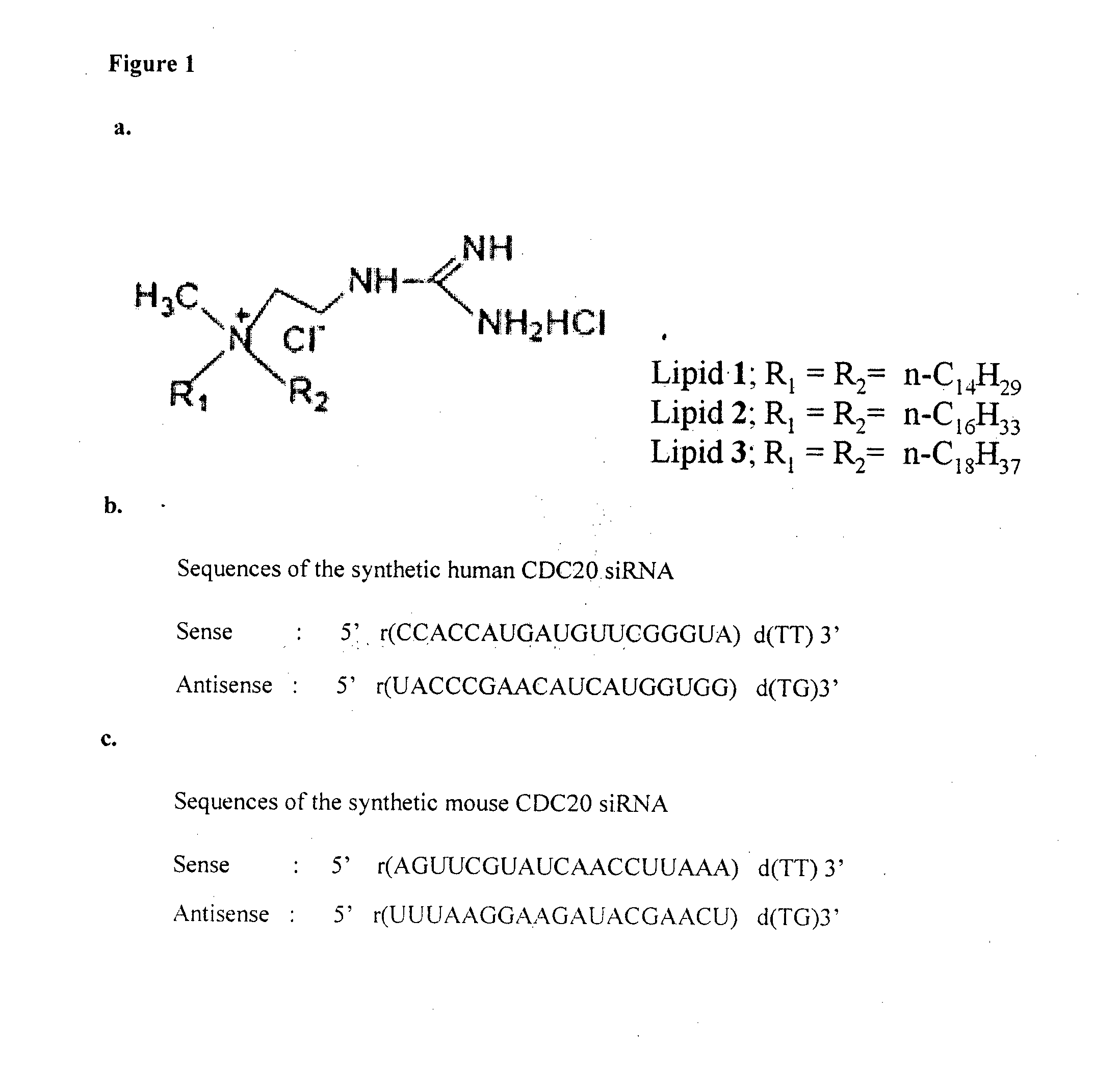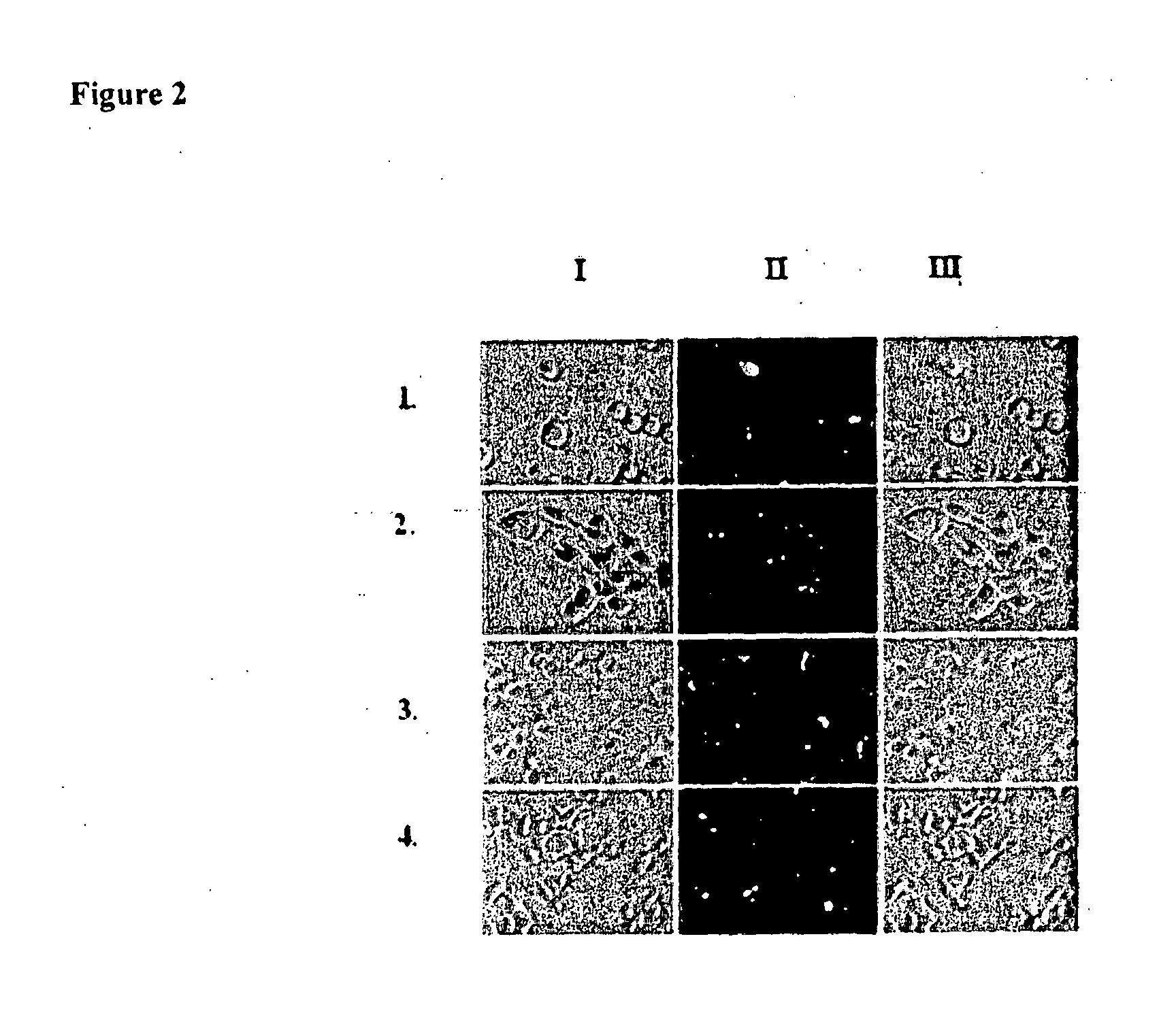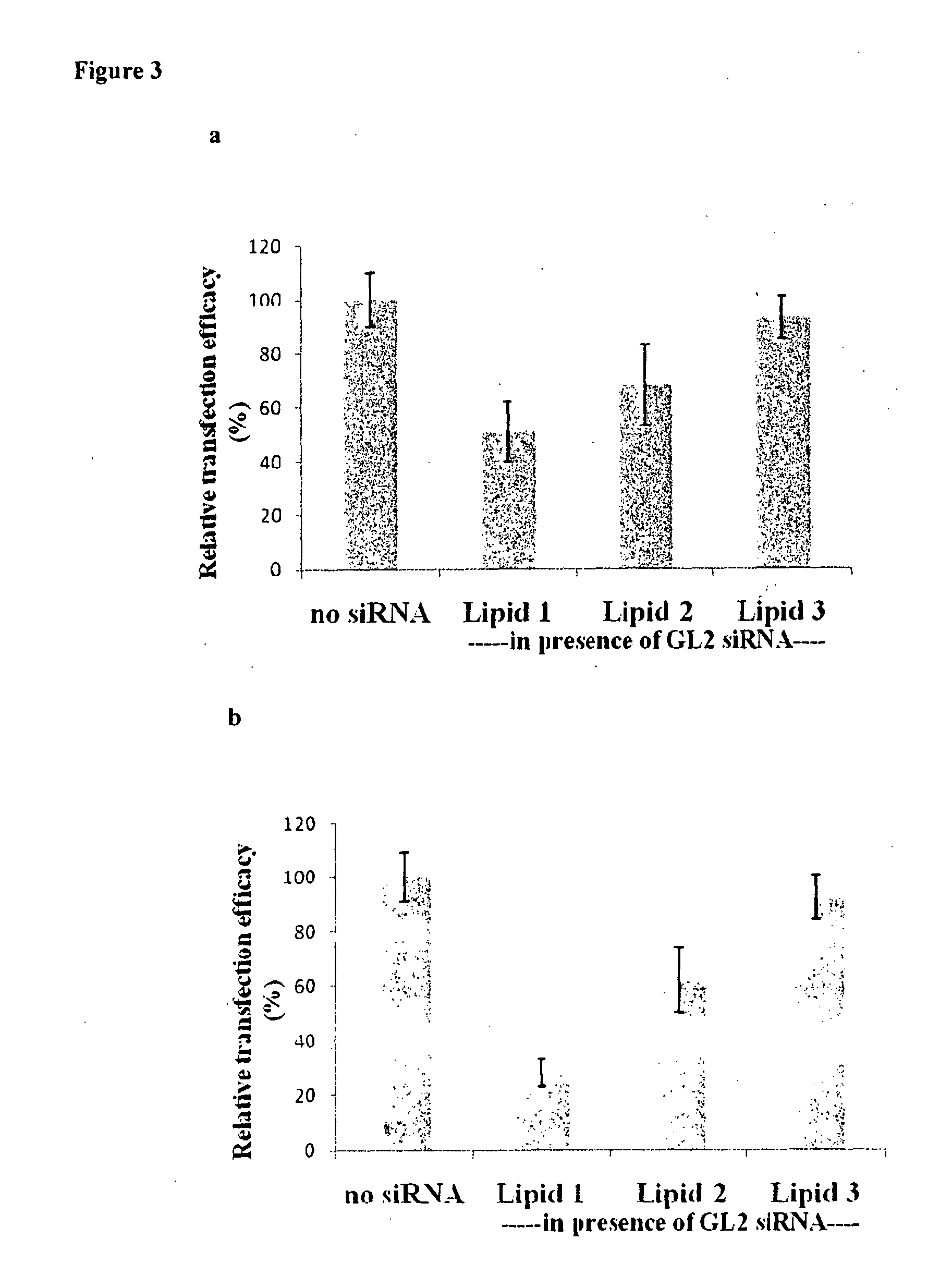METHOD FOR INHIBITING TUMOR GROWTH THROUGH RNA-INTERFERENCE USING LIPOSOMALLY ASSOCIATED CDC20 siRNA
a technology of cdc20 sirna and rna interference, which is applied in the field of invivo methods for treating cancer, to achieve the effects of inhibiting tumour growth, high efficiency and low toxicity
- Summary
- Abstract
- Description
- Claims
- Application Information
AI Technical Summary
Benefits of technology
Problems solved by technology
Method used
Image
Examples
example 1
[0074]Syntheses of the cationic lipids 1-3 (FIG. 1). Lipids were synthesized following the procedures depicted schematically in FIG. 1.
[0075]Synthesis of Lipid 2.
[0076]Step-i. Synthesis of N,N-di-n-hexadecyl-N-[2-(N′,N′-di-tertbutoxycarbonyl-guanidinyl]ethyl amine (III, FIG. 1). Mercuric chloride (0.28 g, 1.0 mmol) was added to a mixture of N-2-aminoethyl-N,N-di-n-hexadecylamine (I, 0.49 g. 0.95 mmol), bis-N-Boc-thiourea (II, 0.26 g, 0.95 mmol, prepared conventionally by reacting one equivalent of thiourea with 2 equivalents of BOC-anhydride in presence of 2 equivalents of sodium hydride in anhydrous tetrahydrofuran) and triethylamine (0.21 g, 2.1 mmol) dissolved in dry DMF (5 ml) and dry DCM (2 ml) at 0° C. with continuous stirring. The resulting mixture was stirred at 0° C. under nitrogen for 40 minutes, diluted with ethyl acetate (20 ml) and filtered through a pad of celite. The filtrate was sequentially washed with water (2×20 ml) and brine solution (2×20 ml), dried over anhydro...
example 2
[0084]Evaluation of siRNA delivery defficacies of the amphoteric composition containing lipid 1, (FIG. 1) in four cells including COS-1, RAW264.7, CHO and HepG2 cells (FIG. 2).
[0085]Preparation of Liposomes for In Vitro Experiments:
[0086]Cationic lipids taken in methanol and cholesterol (in 1:1 molar ratio) taken in chloroform were dried under a stream of N2 gas and vacuum-dessicated for a minimum of 6 h to remove residual organic solvent. The dried lipid film was hydrated in RNAse free water at cationic lipid concentration of 1 mM, for a minimum of 12 h. Liposomes were vortexed to remove any adhering lipid film and probe sonicated until a clear translucent solution formed.
[0087]Method.
[0088]Cells were seeded at a density of 40,000 cells / well in a 24-well plate for 18 h before transfection in 500 μl of growth medium such that the well became 30-50% confluent at the time of transfection. For each well to be transfected, siRNA duplex-Liposome complexes were prepared as follows:
a). 20 ...
example 3
[0090]Knocking down the expression of firefly luciferase GL2 gene in A549 & B16F10 cells by delivering luciferase GL2 siRNA with the formulation containing equimolar amounts of Lipid 1 (FIG. 1) and cholesterol (FIG. 3).
[0091]Preparation of Liposomes for In Vitro Experiments:
[0092]Cationic lipids taken in methanol and cholesterol (in 1:1 molar ratio) taken in chloroform were dried under a stream of N2 gas and vacuum-dessicated for a minimum of 6 h to remove residual organic solvent. The dried lipid film was hydrated in RNAse free water at cationic lipid concentration of 1 mM, for a minimum of 12 h. Liposomes were vortexed to remove any adhering lipid film and probe sonicated until a clear translucent solution formed.
[0093]One day before transfection, cells were seeded at 1×104 cells / well in 96-well plates with 100 μL of growth medium containing 10% FBS medium and incubated for 24 h. Cells were 50-60% confluent before transfection. The complex of luciferase GL2 siRNA, liposome and pCM...
PUM
| Property | Measurement | Unit |
|---|---|---|
| Temperature | aaaaa | aaaaa |
| Fraction | aaaaa | aaaaa |
| Time | aaaaa | aaaaa |
Abstract
Description
Claims
Application Information
 Login to View More
Login to View More - R&D
- Intellectual Property
- Life Sciences
- Materials
- Tech Scout
- Unparalleled Data Quality
- Higher Quality Content
- 60% Fewer Hallucinations
Browse by: Latest US Patents, China's latest patents, Technical Efficacy Thesaurus, Application Domain, Technology Topic, Popular Technical Reports.
© 2025 PatSnap. All rights reserved.Legal|Privacy policy|Modern Slavery Act Transparency Statement|Sitemap|About US| Contact US: help@patsnap.com



